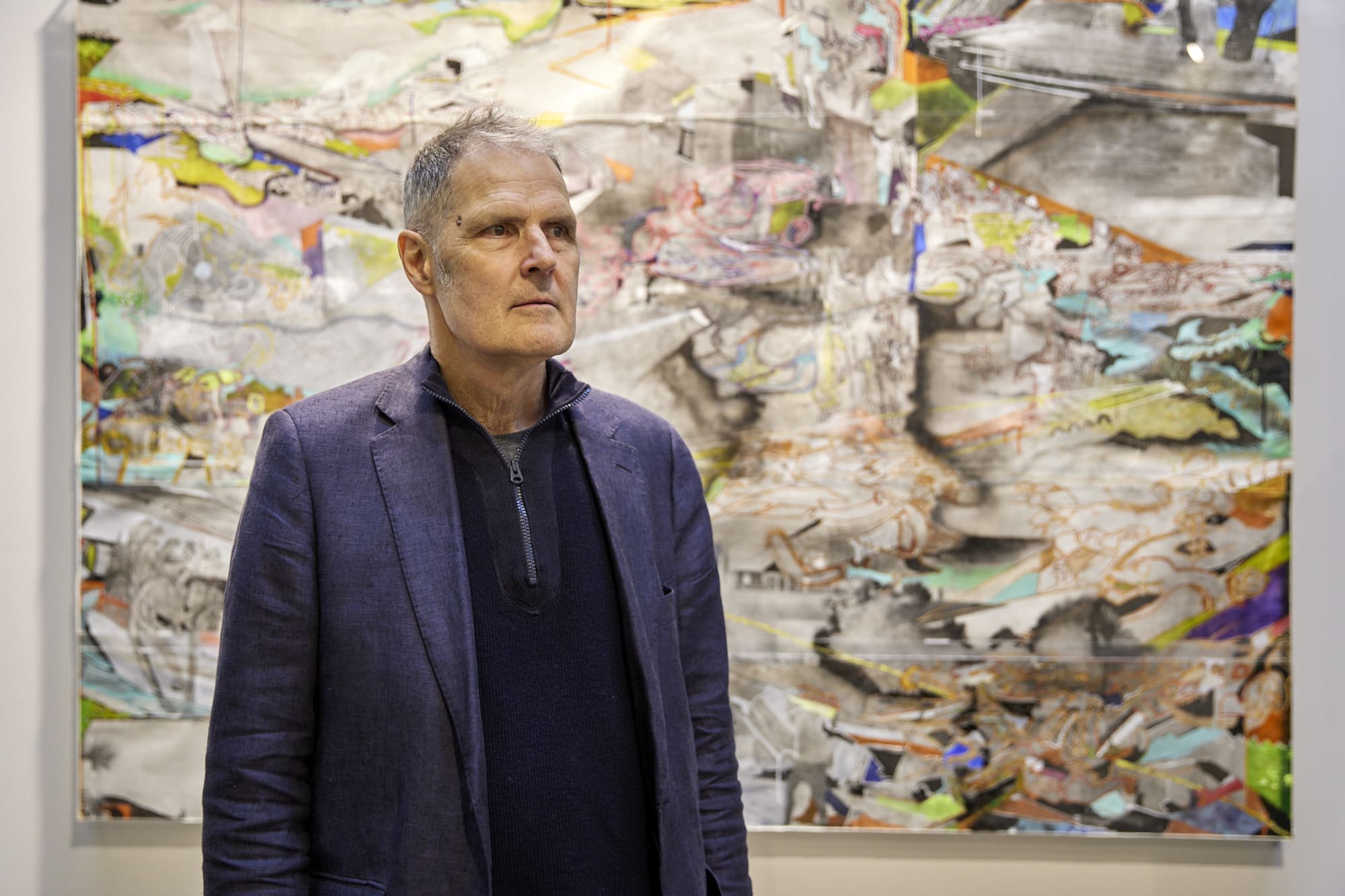
Making Space at the Table
NAP Contemporary’s group show, The Elephant Table, platforms six artists and voices—creating chaos, connection and conversation.

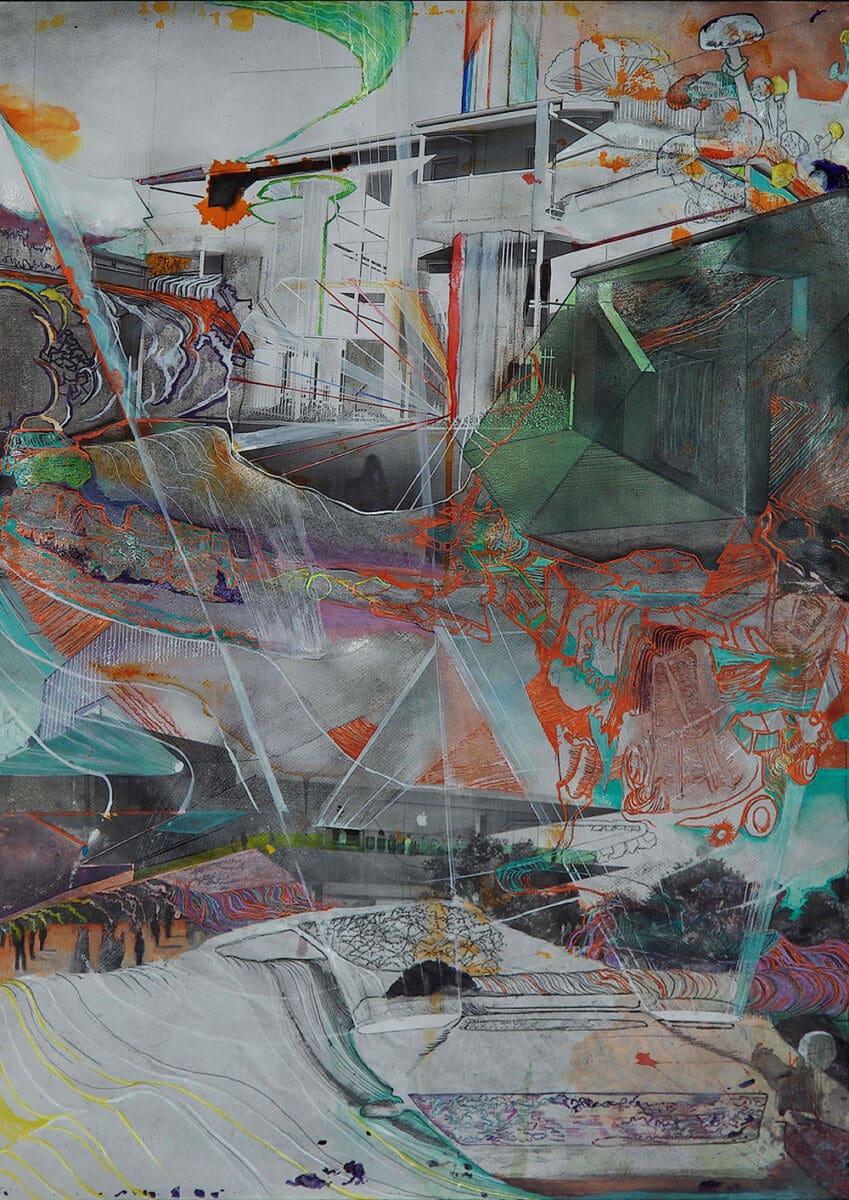
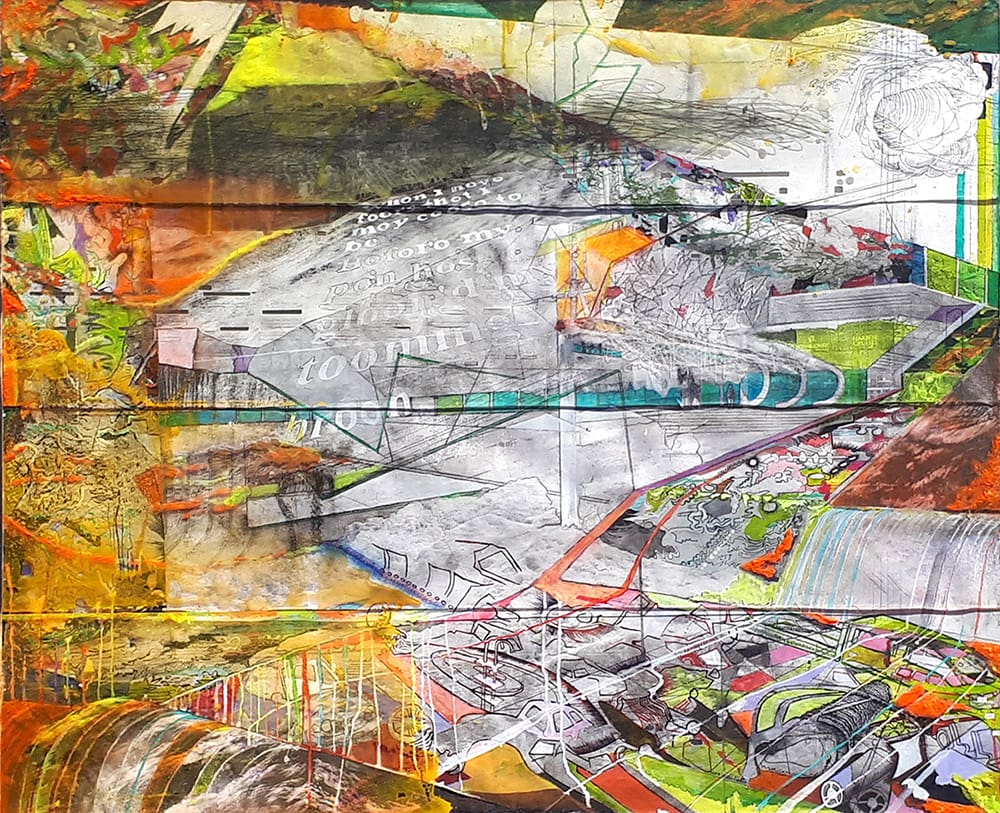
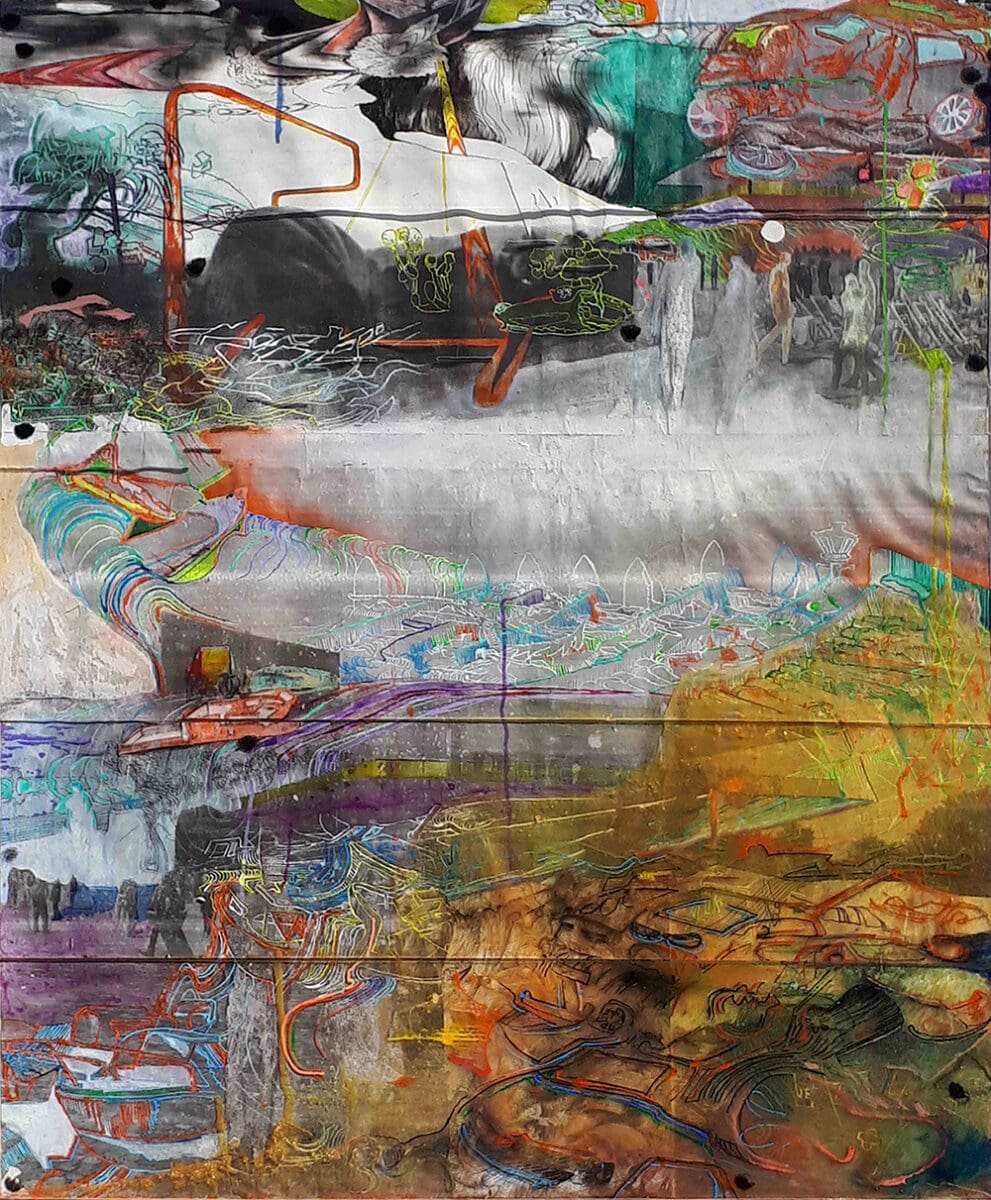
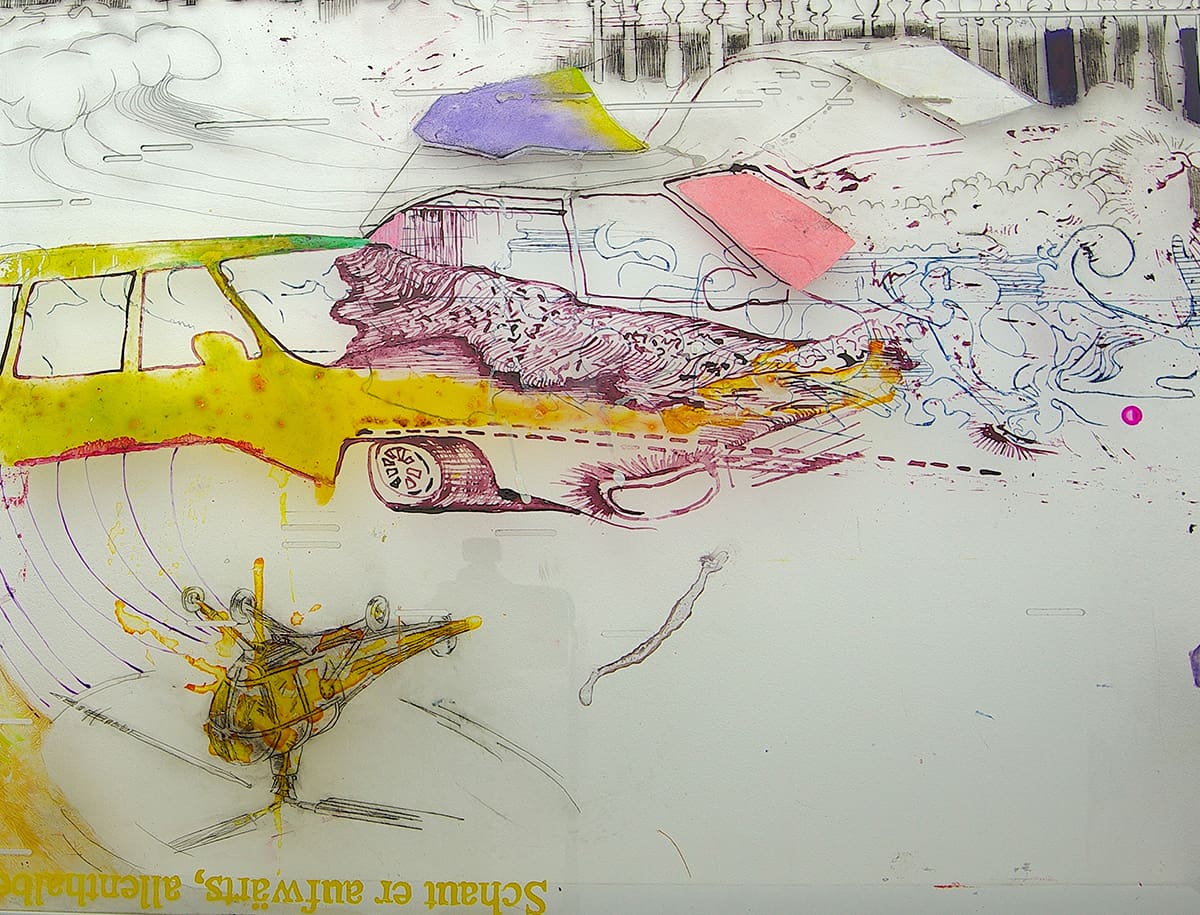
Melbourne-based artist Alex Hamilton likes to paint places where people gather. Based on real locations like Melbourne’s Federation Square and New York’s Times Square through to office blocks and carparks, Hamilton’s paintings reorganise these built environments as vast landscapes filled with visuals lifted from reality, memory and dreams.
Incorporating materials like paper, tissue and Perspex, Hamilton’s work takes in both the urban and suburban landscape, creating what looks like a multi-layered topographical map. The built environment has remained a persistent subject in Hamilton’s work since the late 1990s, and from early drawings of London cityscapes to his most recent paintings featuring Federation Square, the starting point for many of Hamilton’s images are photocopies of architectural drawings and photographs. For Hamilton, these copies represent the realisation of an imagined place, a gathering place full of information. “When we look at something, it’s not just visual, it’s a whole intertwined, nebulous miasma of interconnected ideas,” he says. “With my work I’m developing this massive system, which I then collide with reality. It’s a world I’m constantly building up and constructing as it goes through daily fractures.”
As a result, Hamilton’s work does not take on the measured accuracy of an architectural drawing, instead it reads like an apocalyptic record of structures broken into parts, free flowing with the energy and rhythms of the built environment, and the movement of the people who frequent them. His work is dream-like, containing a mix of intricately drawn lines, swathes of paint and colours blending and swirling across the surface – the visual chaos occasionally broken by areas of blank space. “These blanks acknowledge the holes in memory and imagination,” Hamilton explains. “It’s the documentation process of how we accumulate information, sometimes we add things in to try and understand what we remember.”
In addition to painting and drawing, Hamilton works across performance, installation and film. His creative influences are wide-ranging and include the plays of Samuel Beckett, books written by Lewis Hyde and Marcel Mauss, the illustrations of Maurice Sendak and caricatures found in newspaper cartoons. When asked about the caricatures, he explains how this way of working ties in with his painting practice. “There’s an idea that landscape artists draw faces by mistake all the time. It’s sort of a joke but also true. A face is this myriad of vectors, contradictory points, illusions and surfaces, which is very similar to what I do with landscape.” Philosophy, science, geography and poetry also have influence on Hamilton’s work, with Judith Wright’s 1945 poem, South of my Days, a subtle prompt for his recent painting, Days of my Circle South, 2023.
In this work, a top layer of Perspex sits over watercolour paper and both surfaces bear drawn and painted markings resembling the rural terrain Wright speaks of in her poem. The effect of the Perspex and grainy texture of the paper beneath creates an atmospheric depth, as though the image boils with energy and movement. However, the surface is not where the work ends. Constructing the frames by hand, Hamilton has built an encapsulating box structure to accommodate the incisions of pianola sound coding holes. He says music comes to him in dreams and he writes it down when he wakes. The finished scores are inscribed on his frames, adding an extra sensory element to the visual narrative on the facade. “When I was making these boxes, I started using even the trickles of glue as part of the work. It all steered towards what I wanted which was to imply there is something beyond the frame.”
Reflecting the infinite possibilities present within the world around him, Hamilton’s images remain in a state of flux. As he puts it, “my work speaks of a blurring of symbolic and material boundaries. By playing with the parameters of abstraction, architecture, landscape, scale, and figuration, I’m conscious of how forces like migration, capitalism, and climate change impact our lived experience.”
Faint recollections we lived there
Alex Hamilton
Jacob Hoerner Galleries
5—28 October
